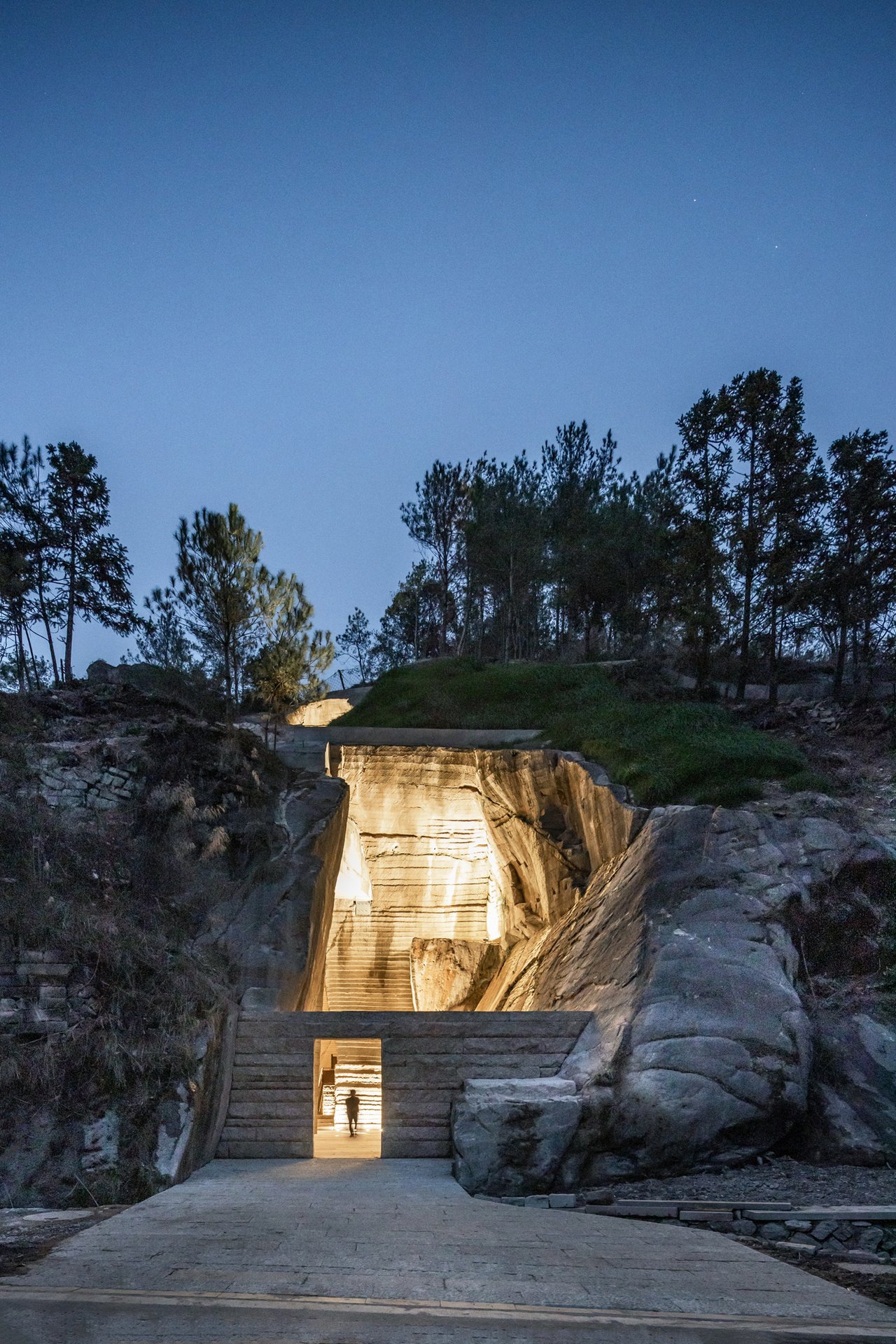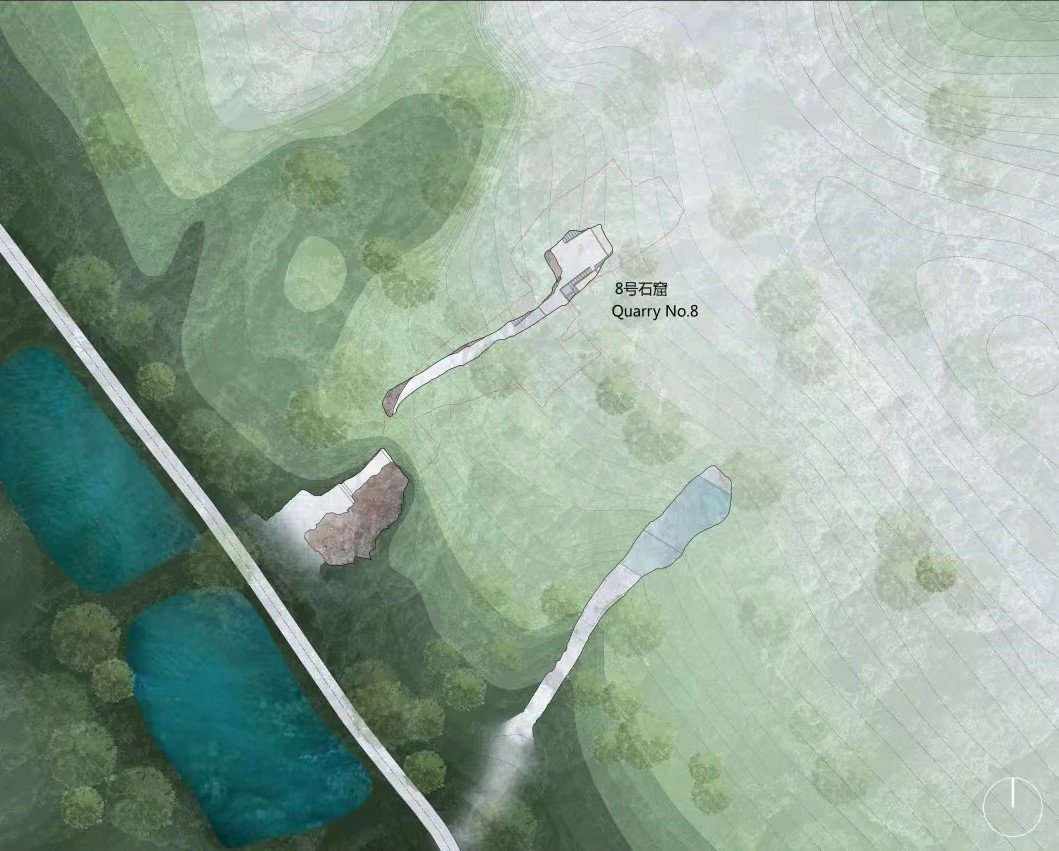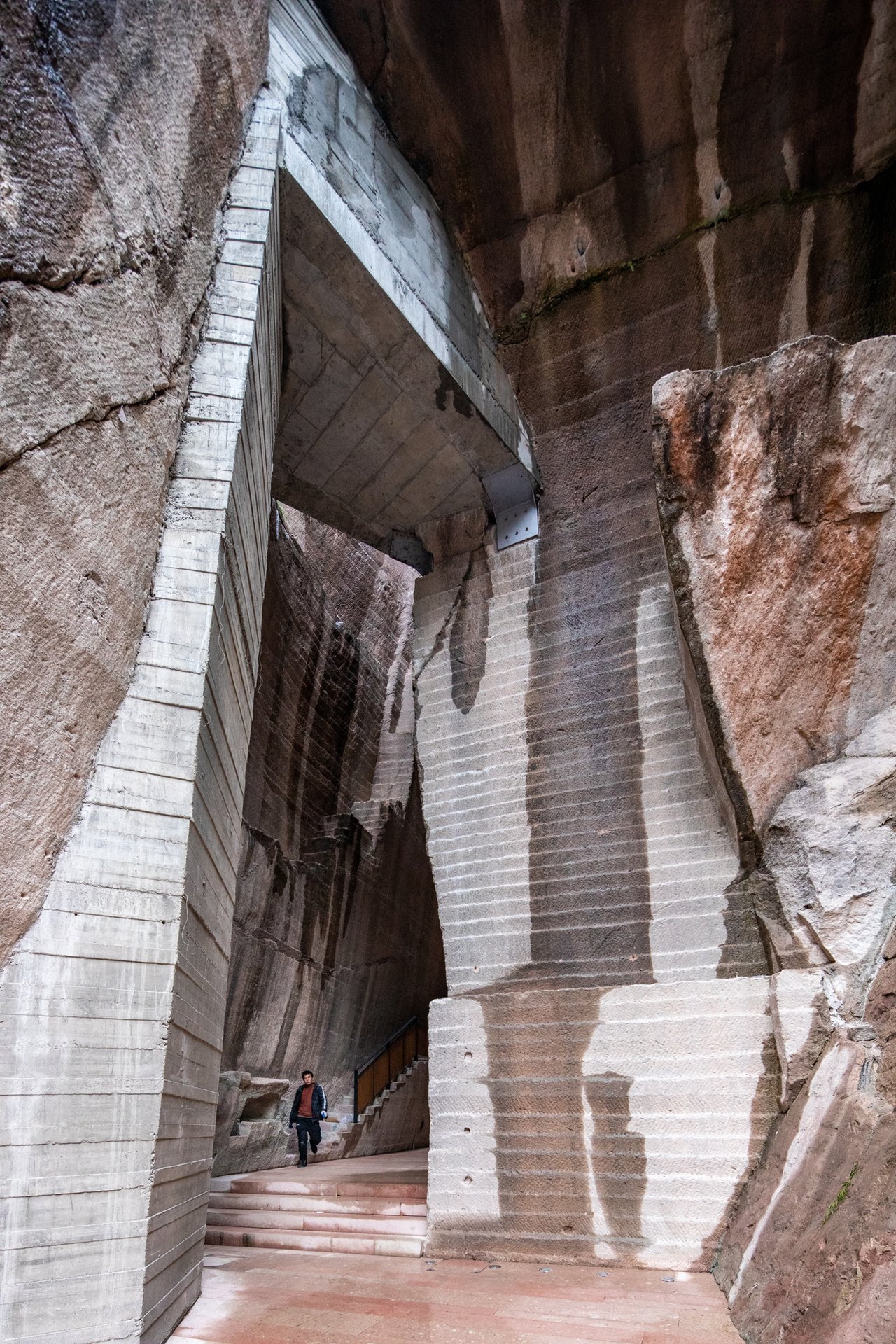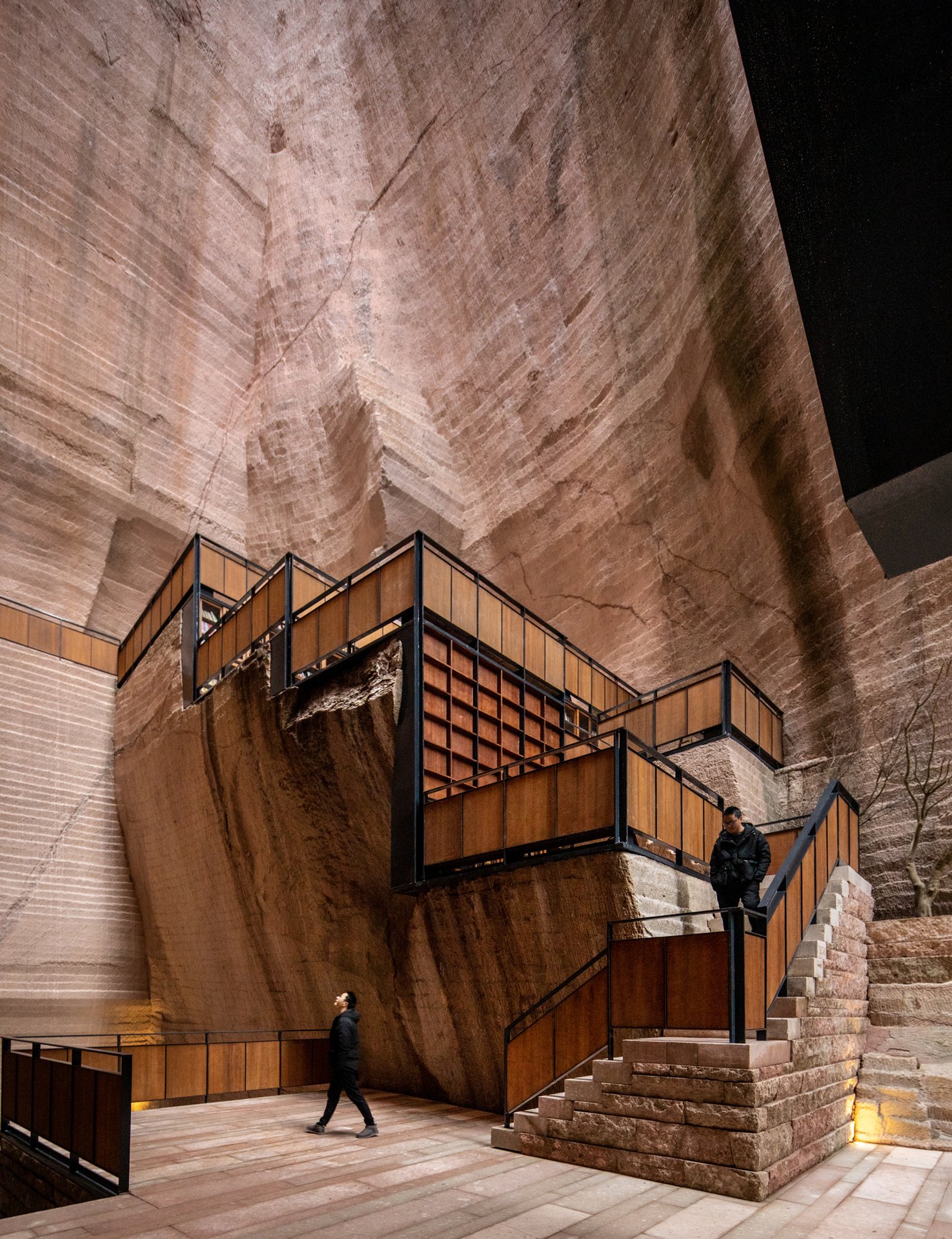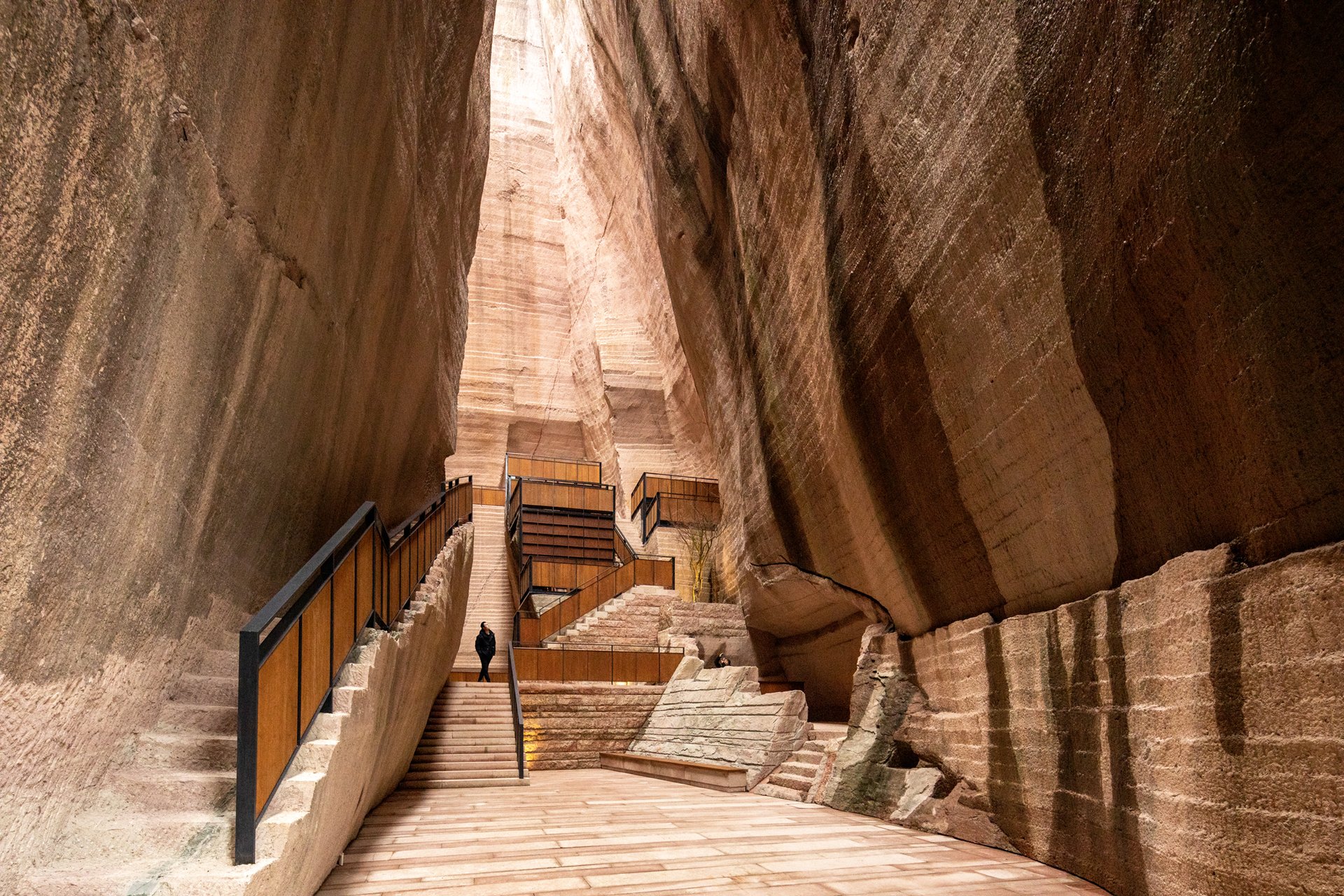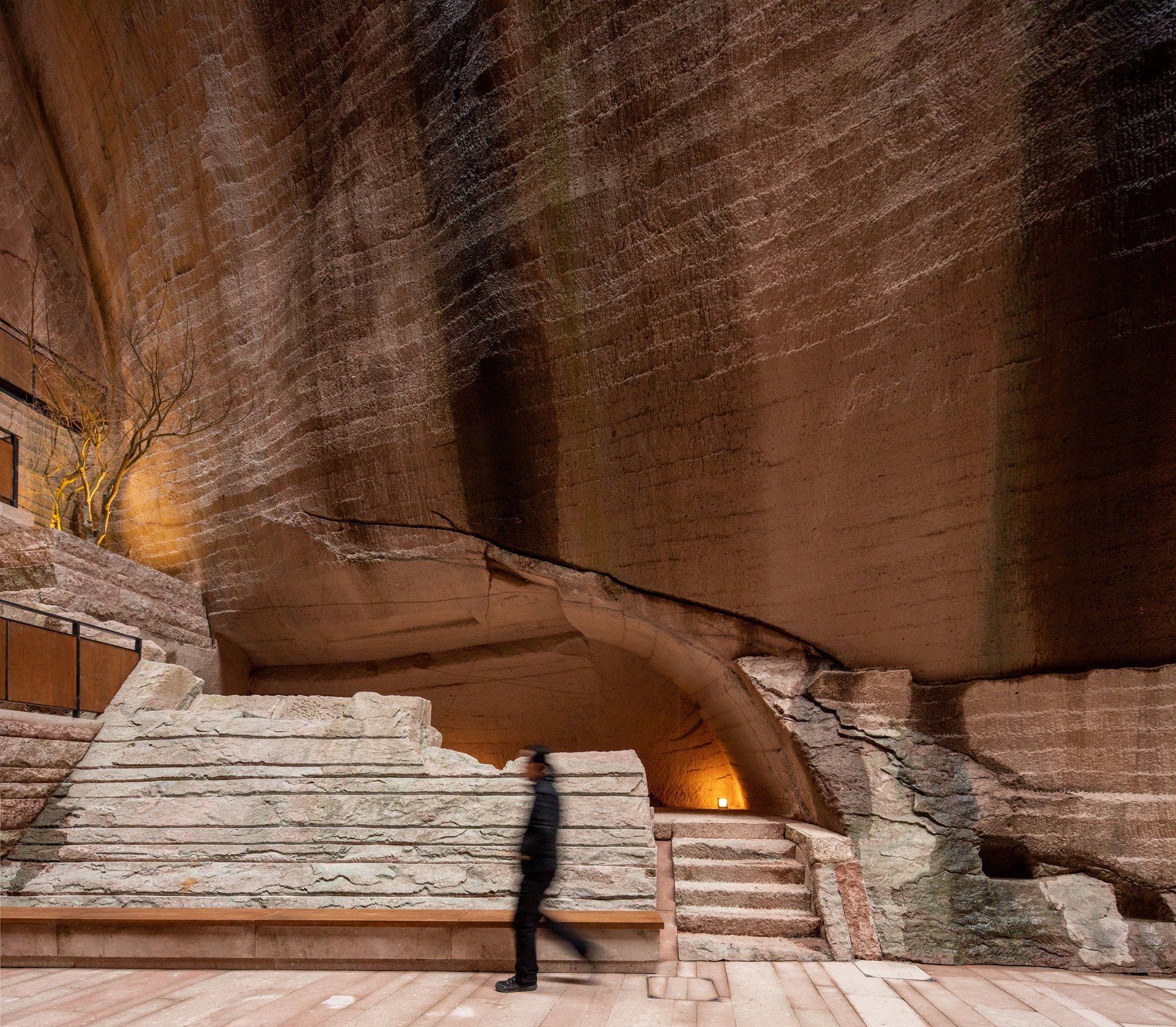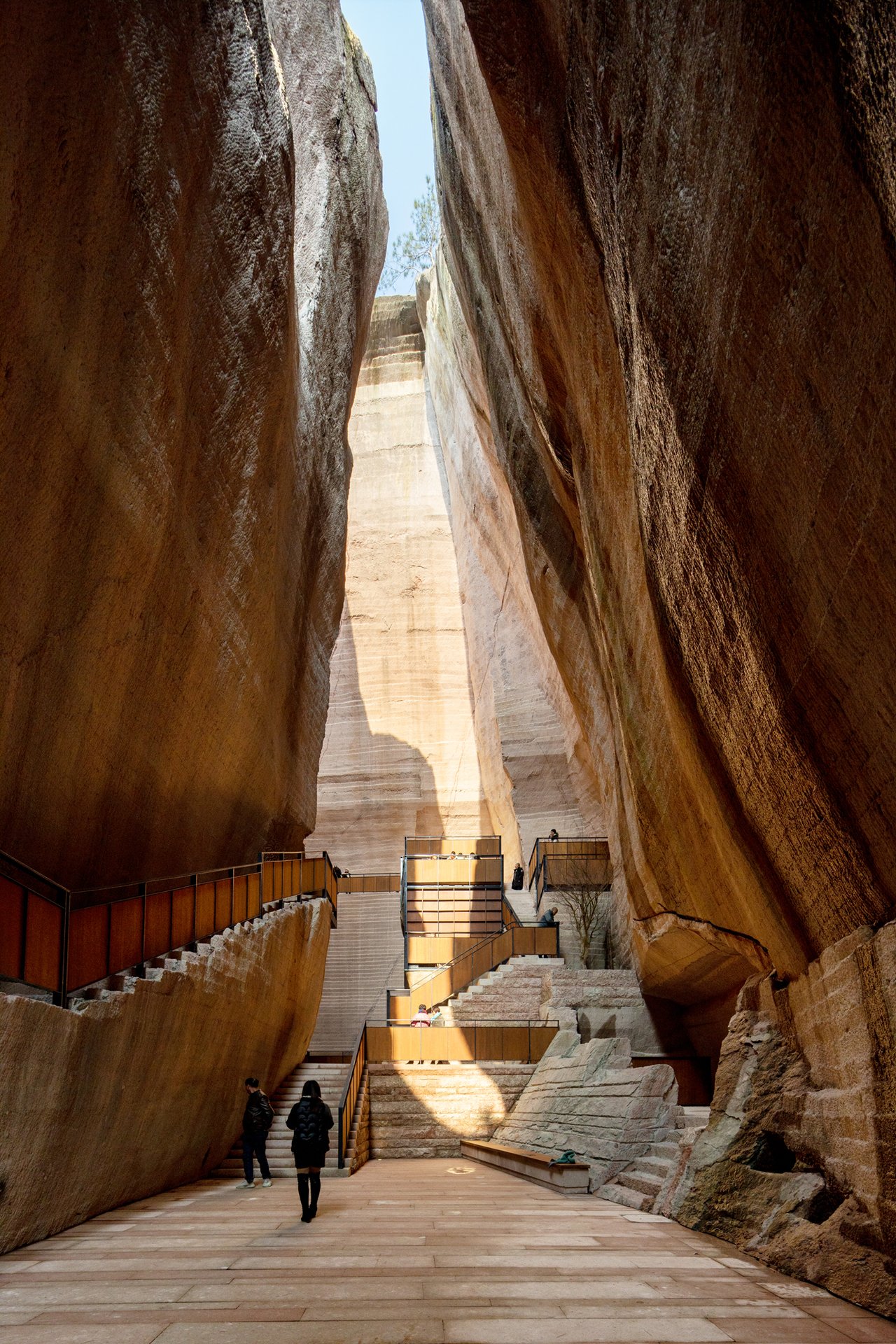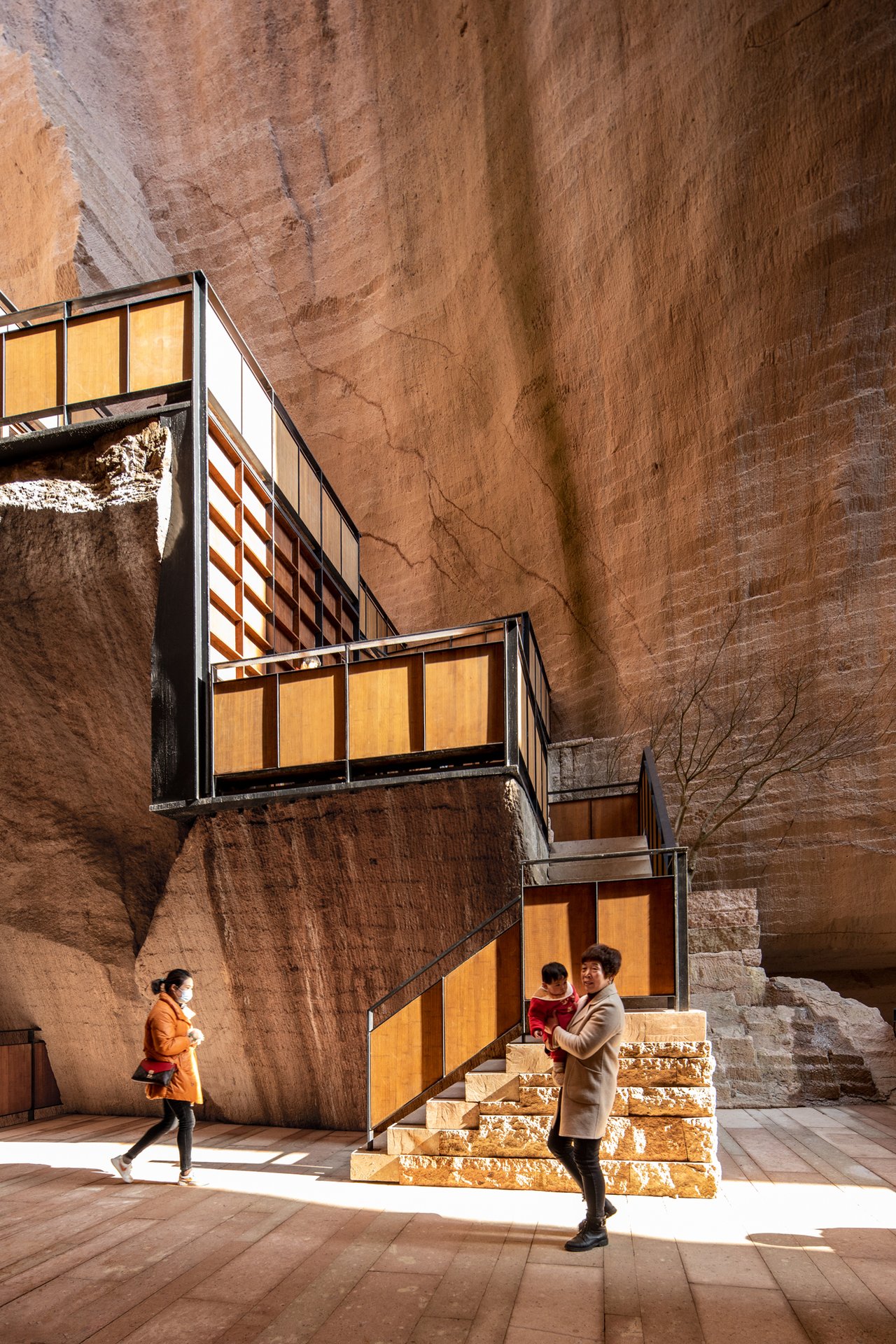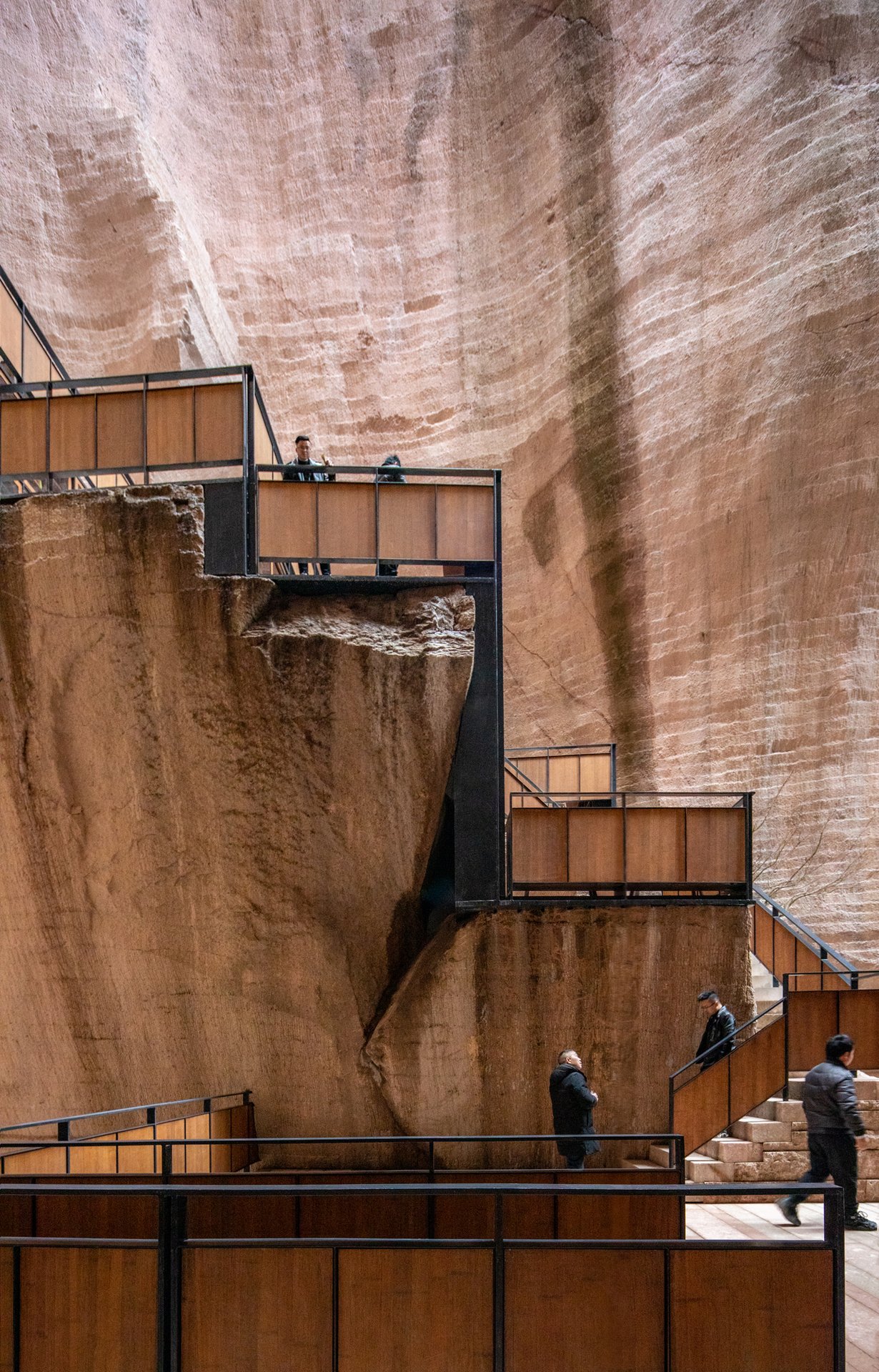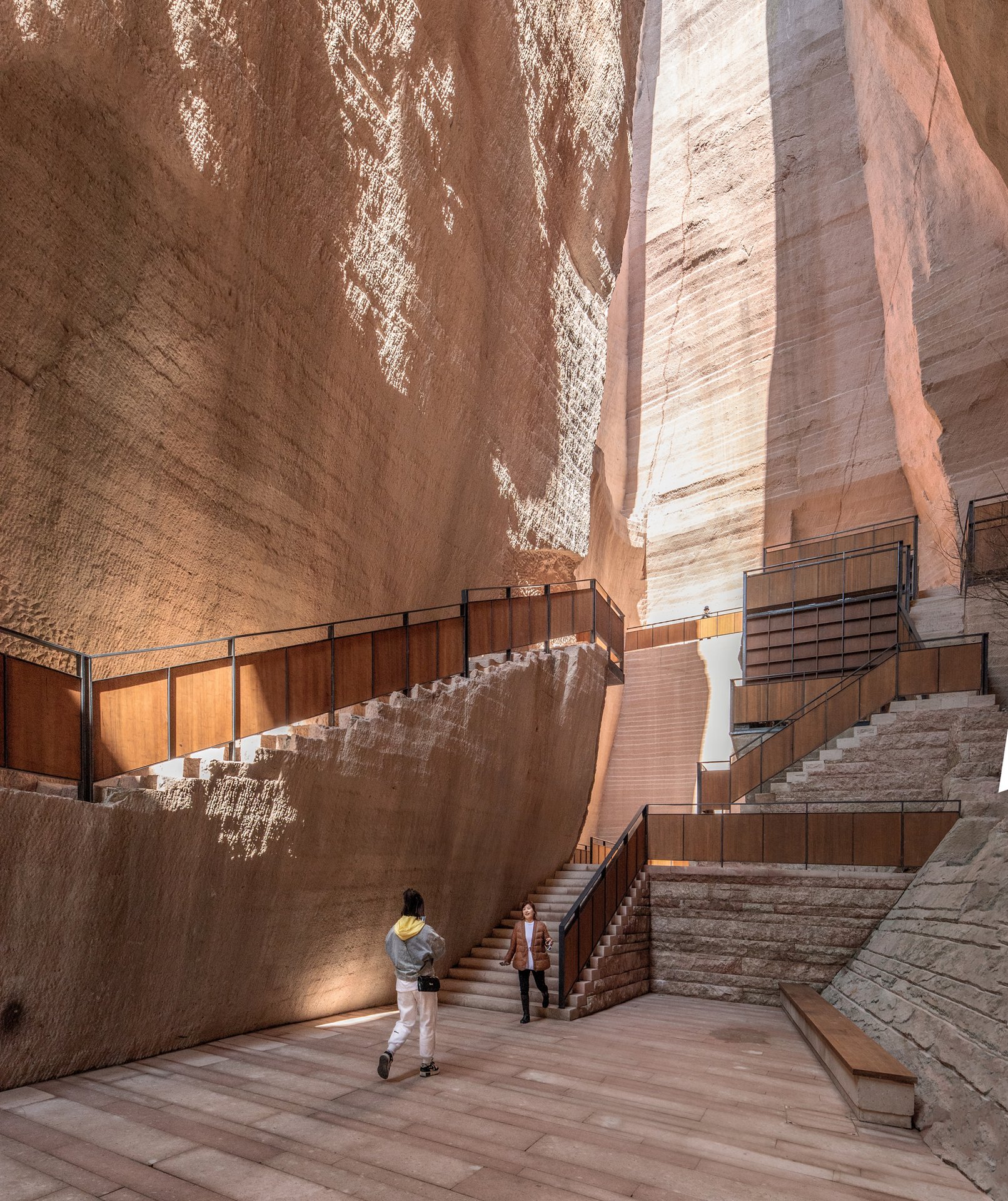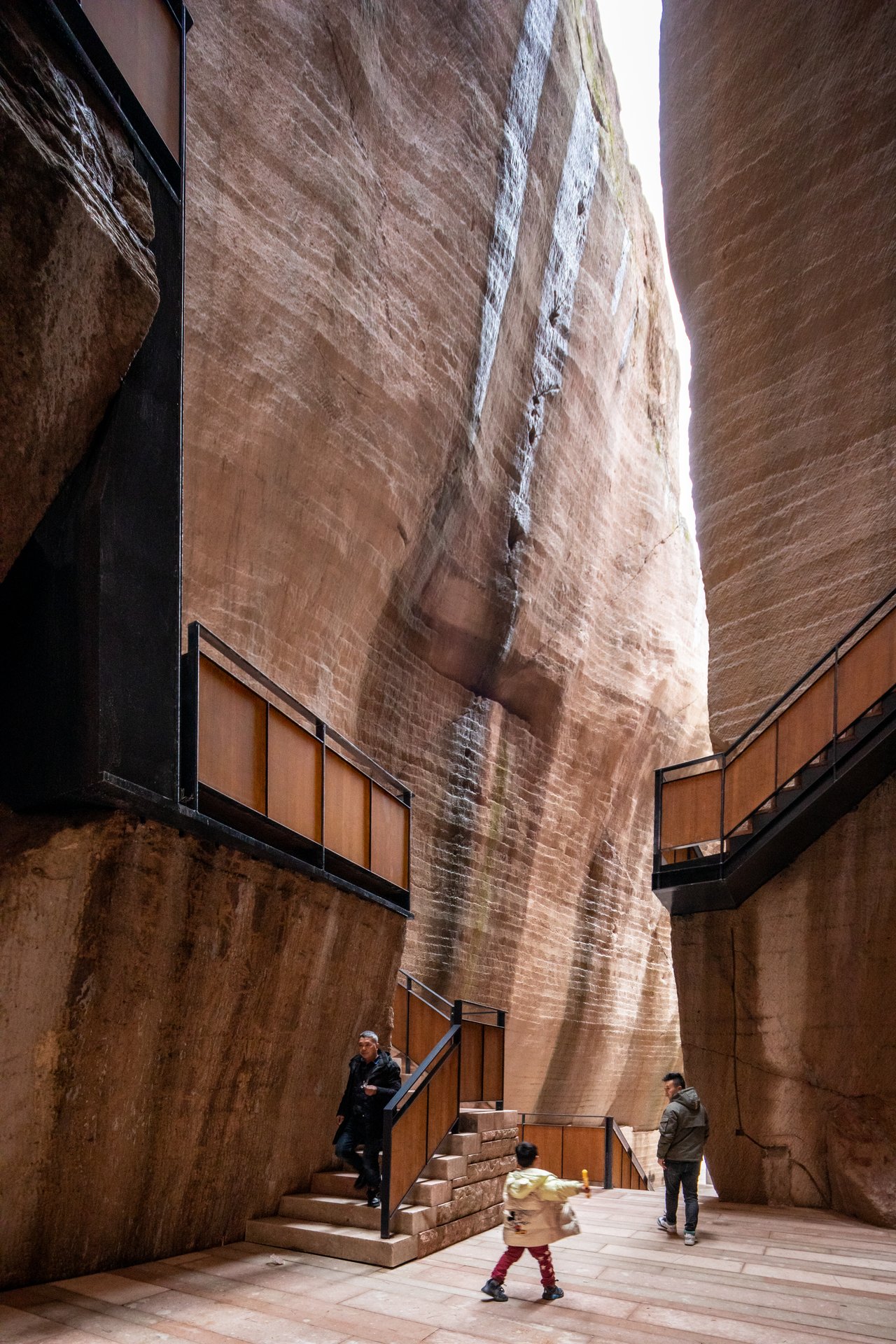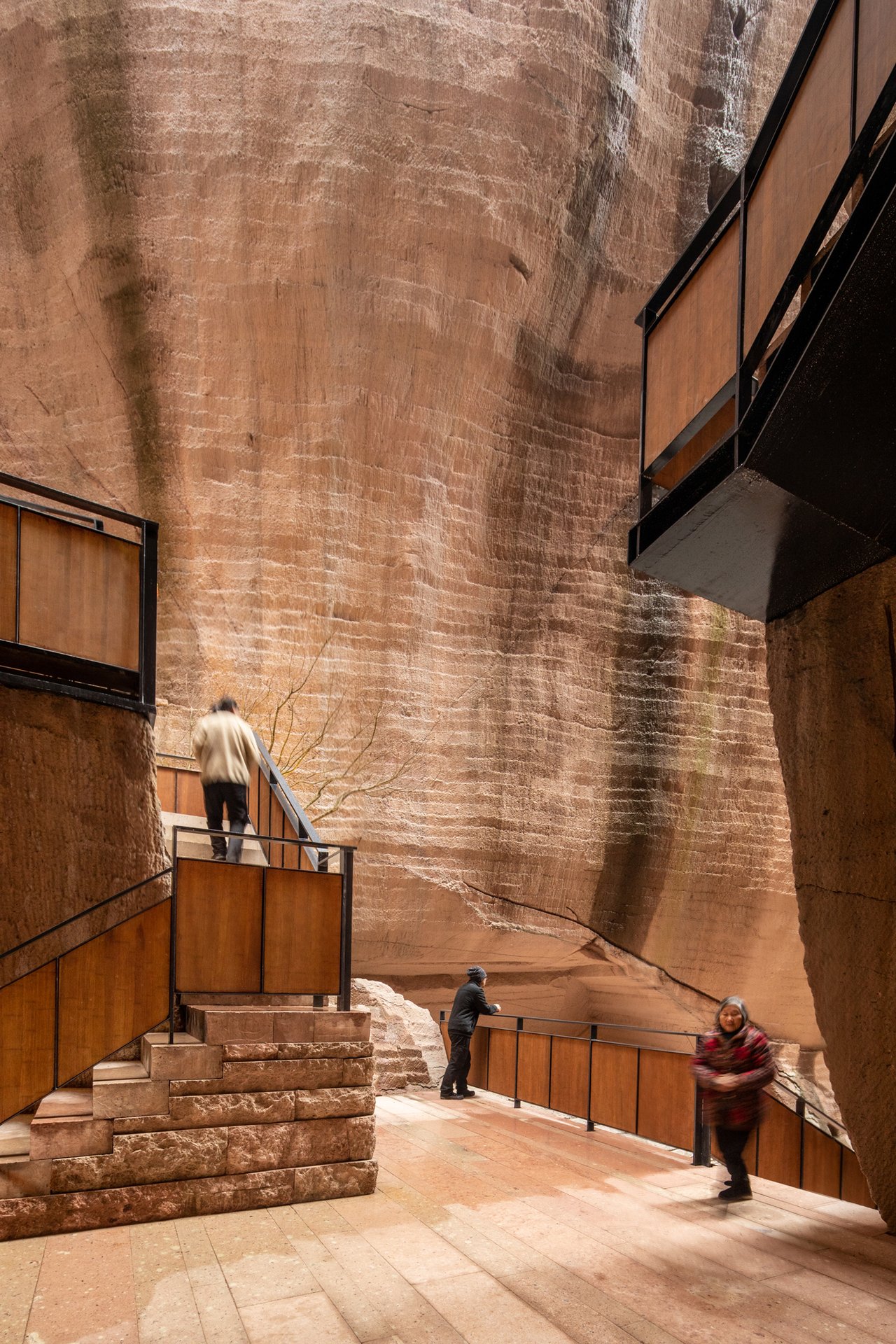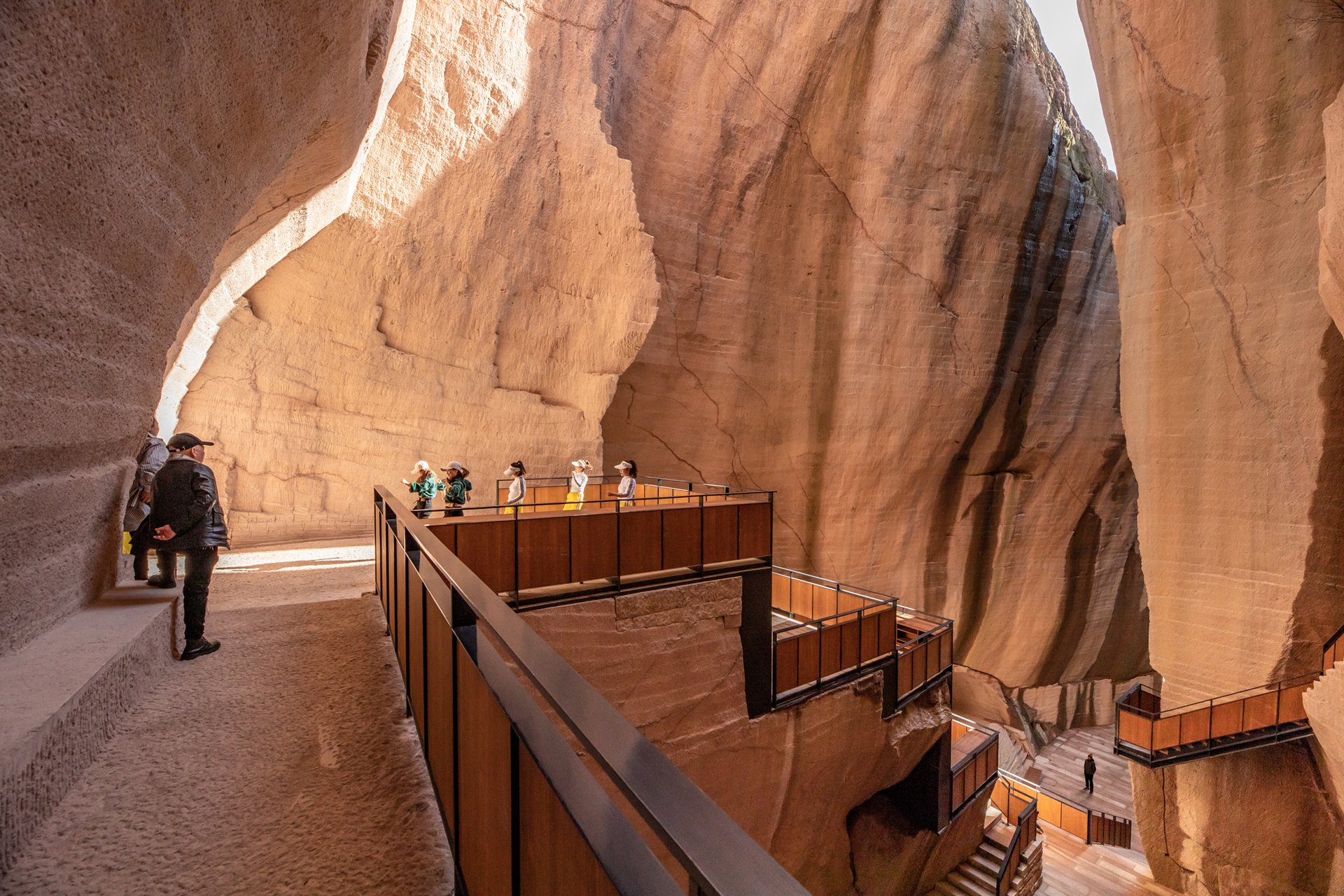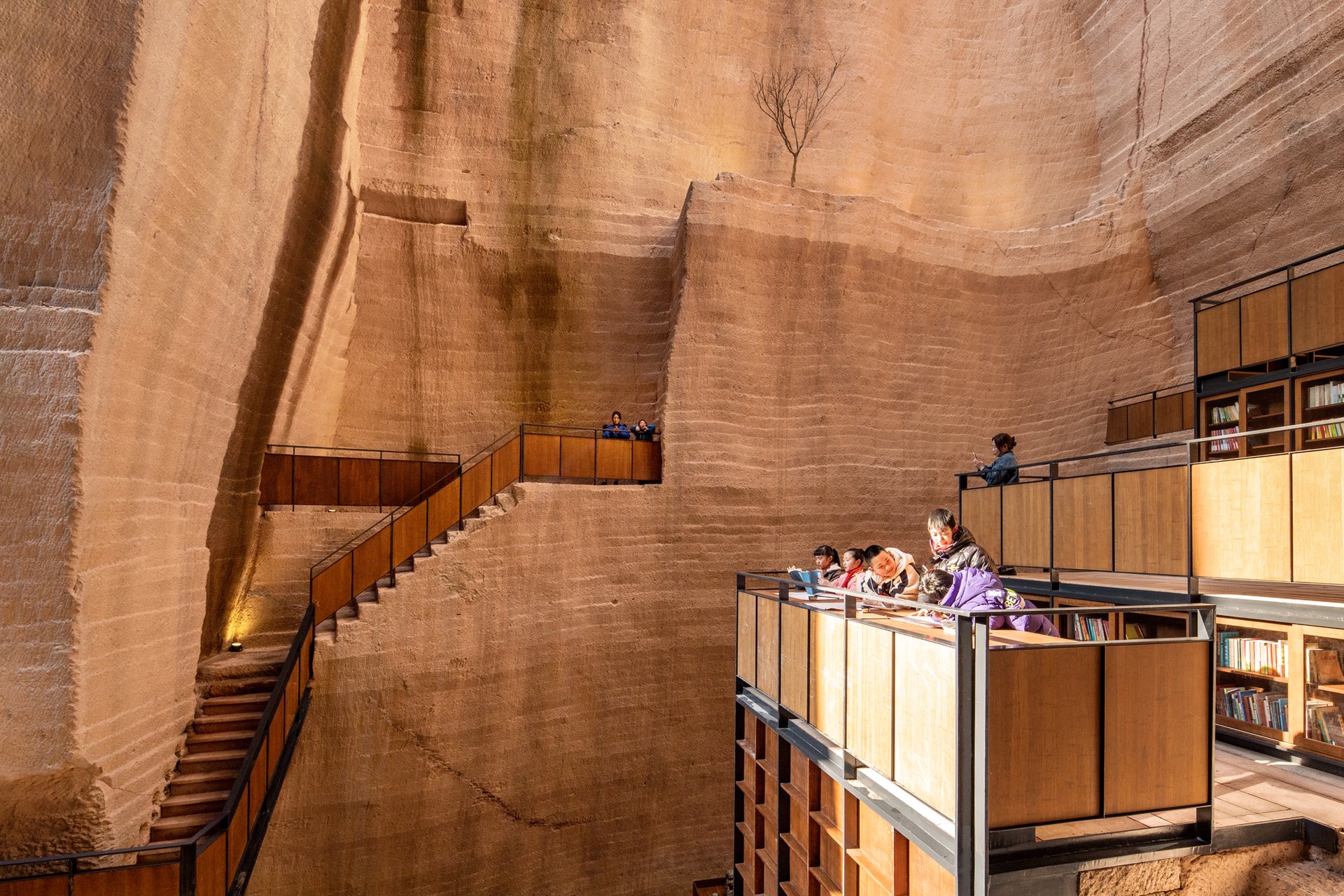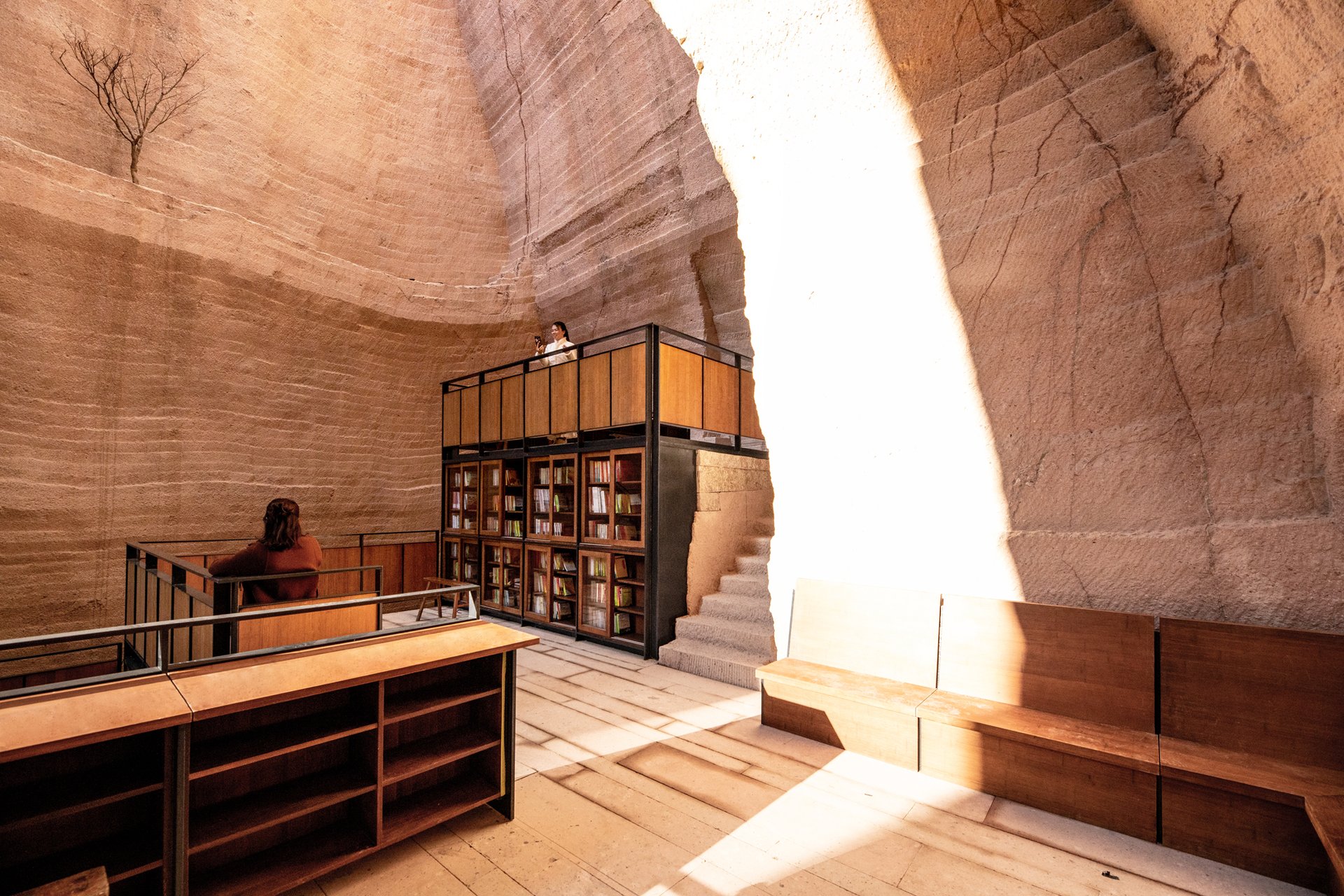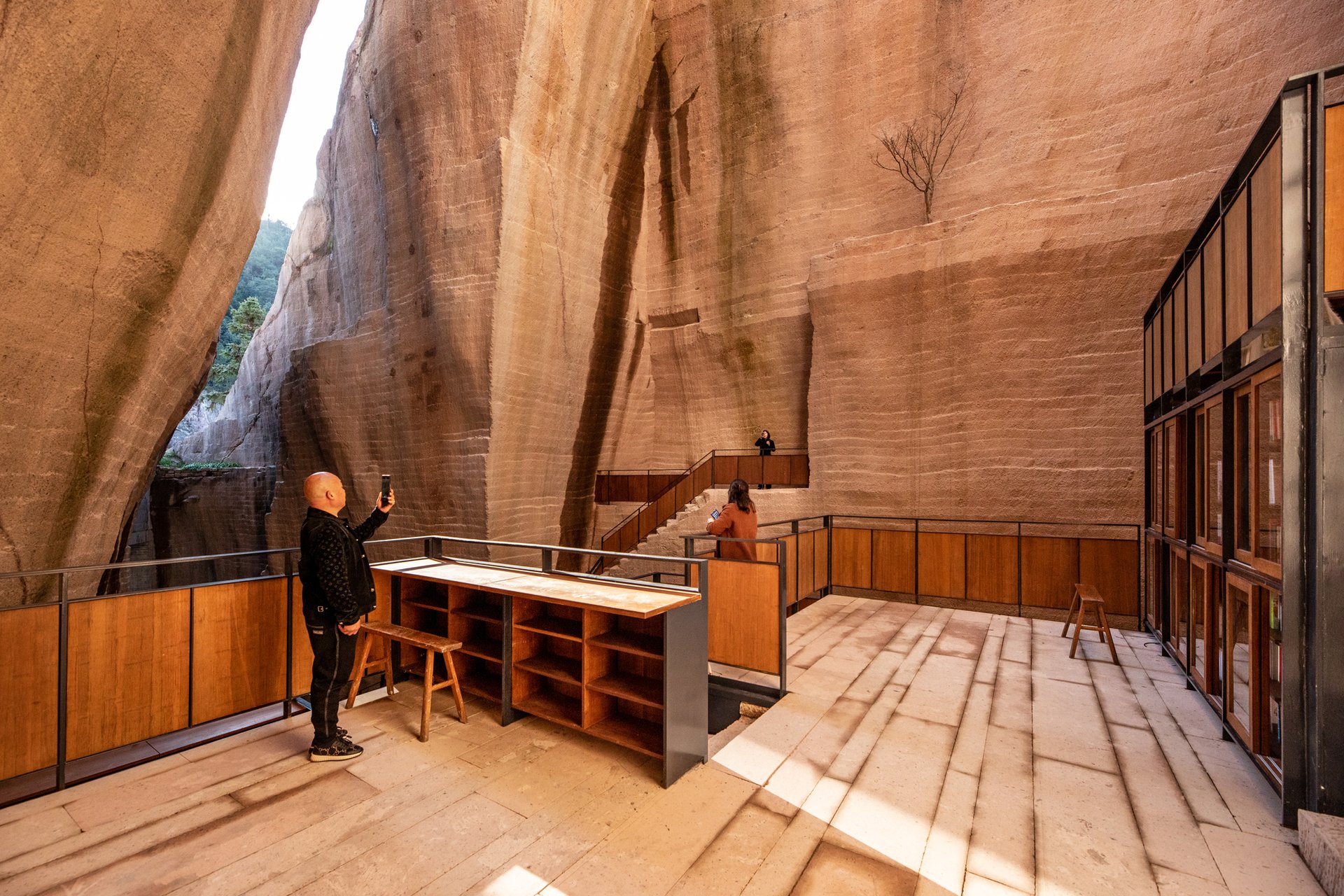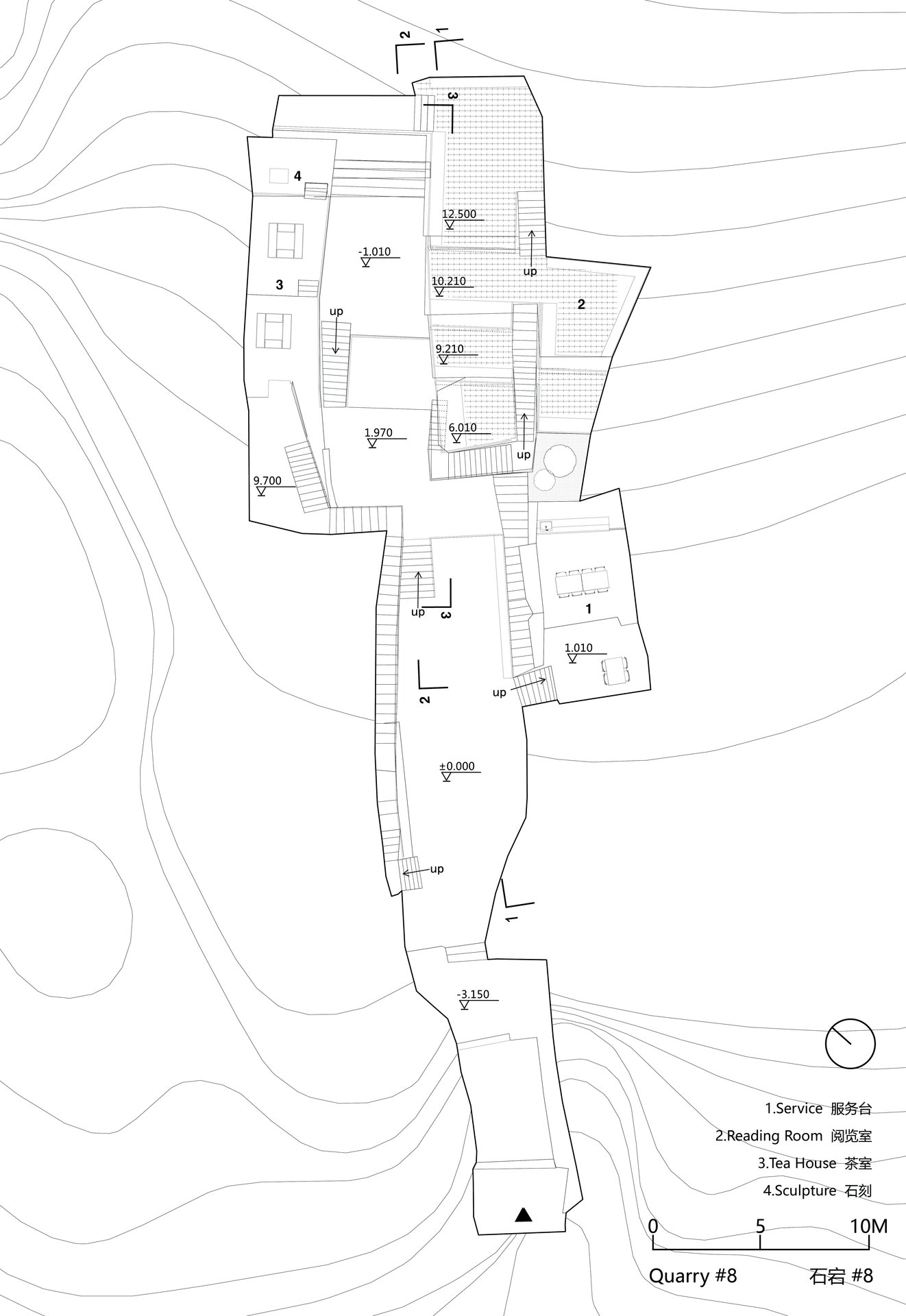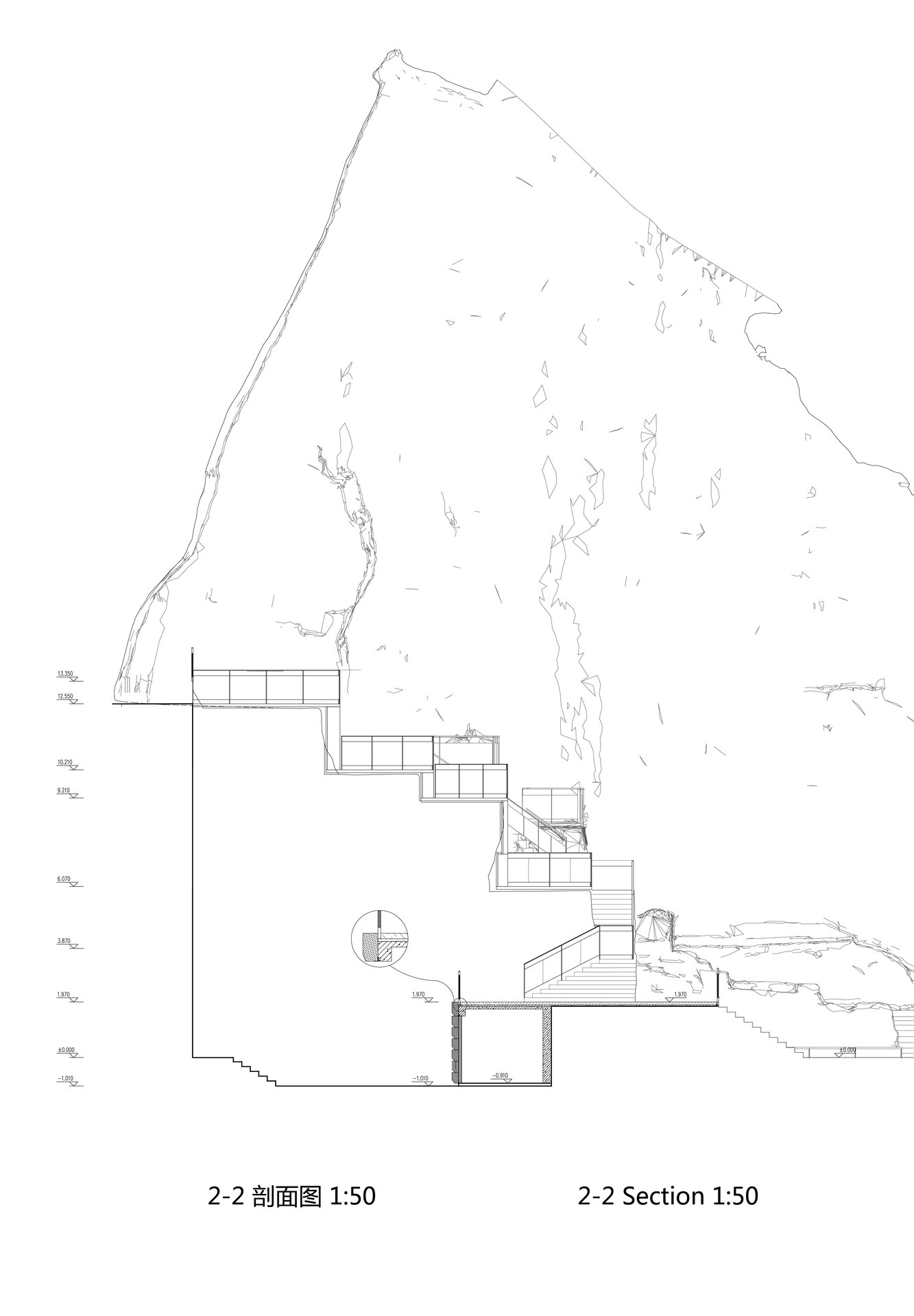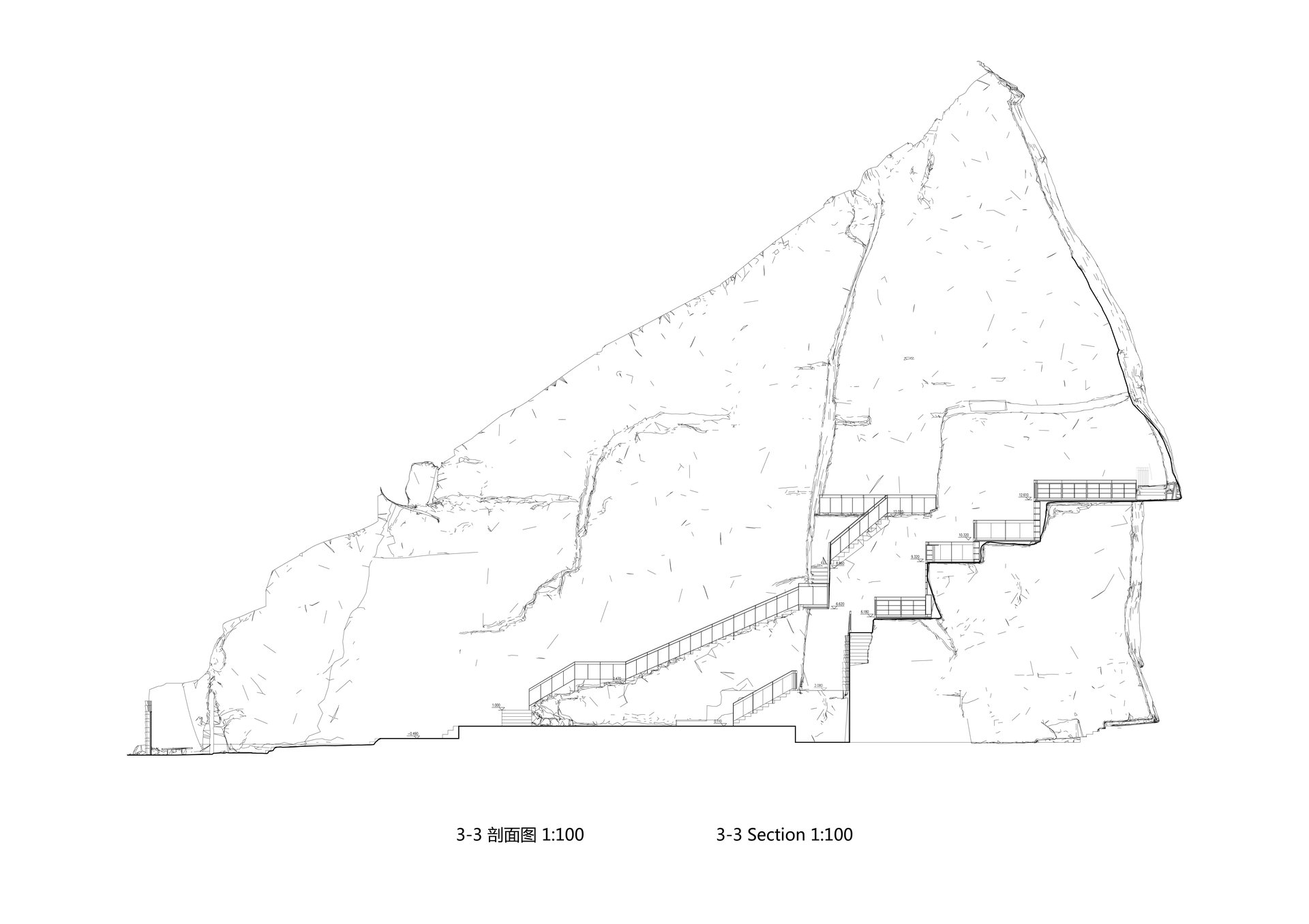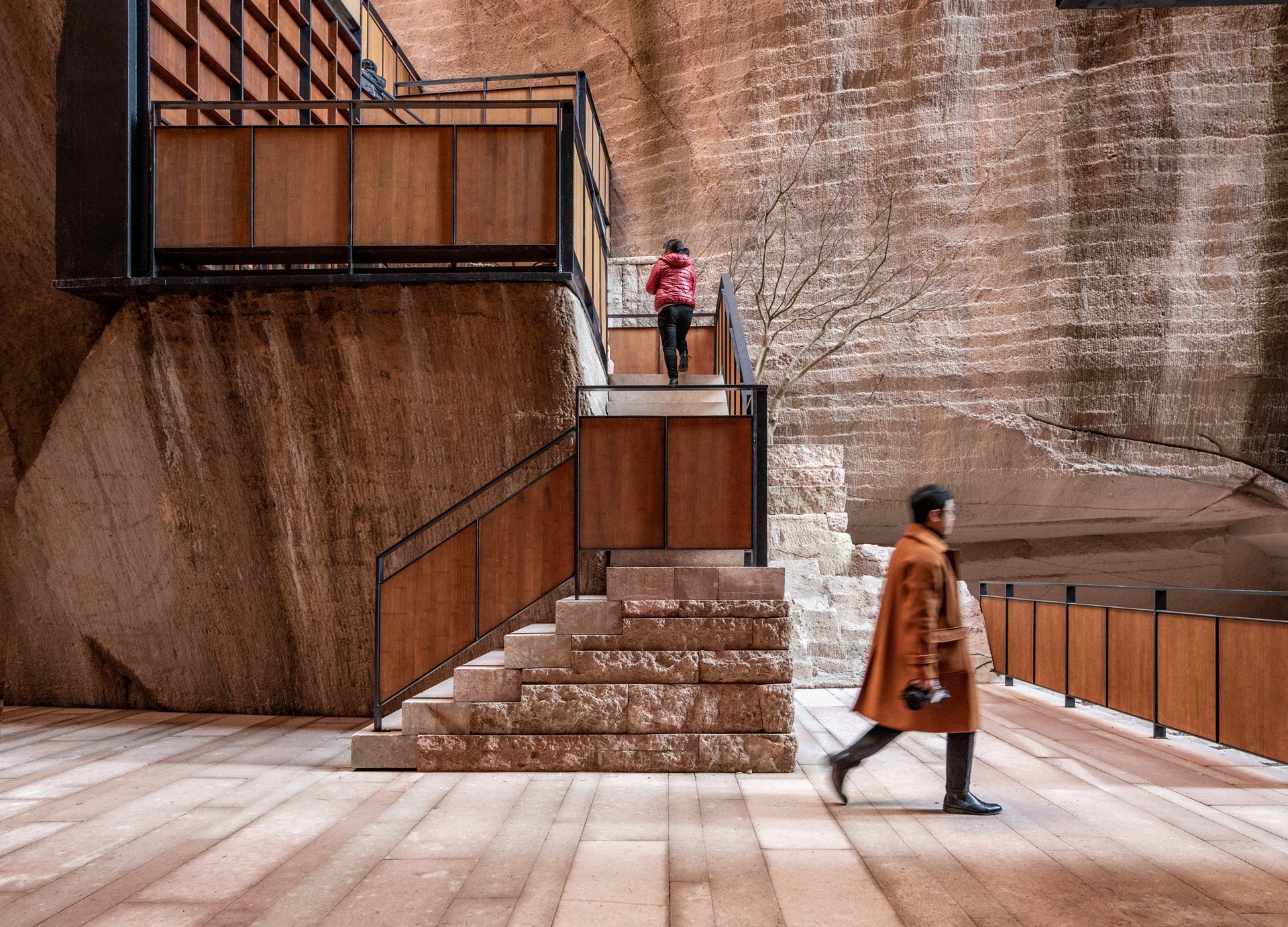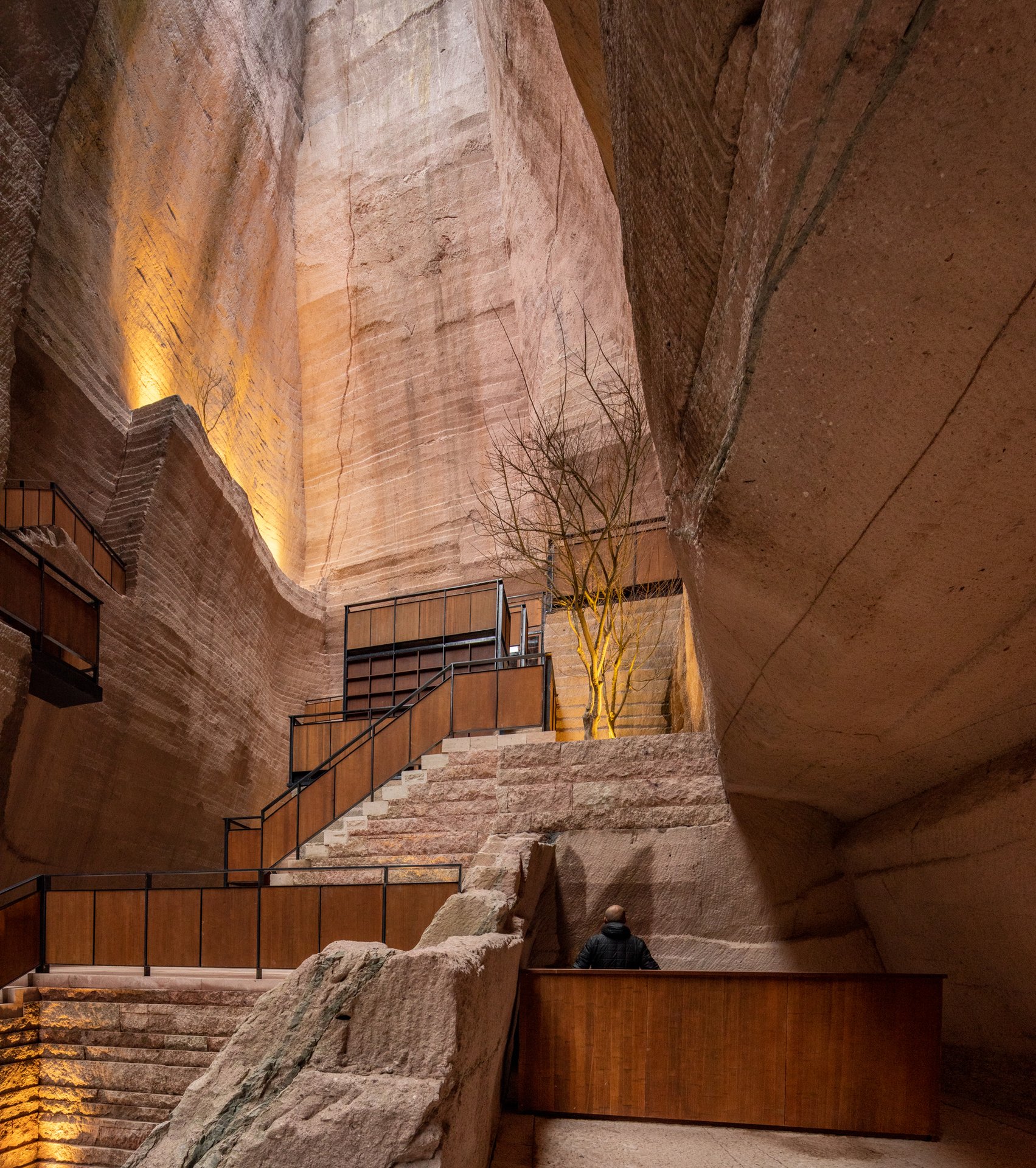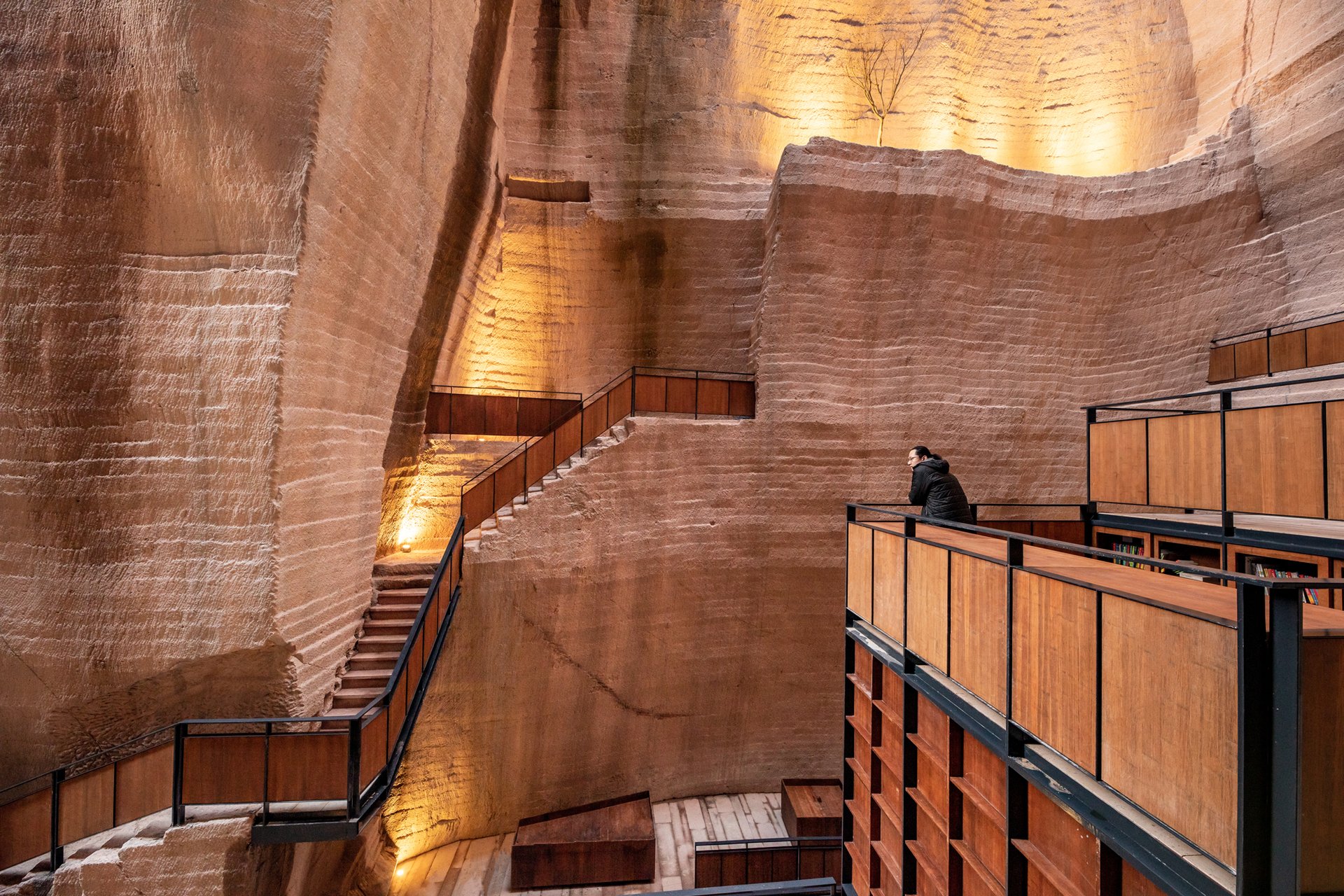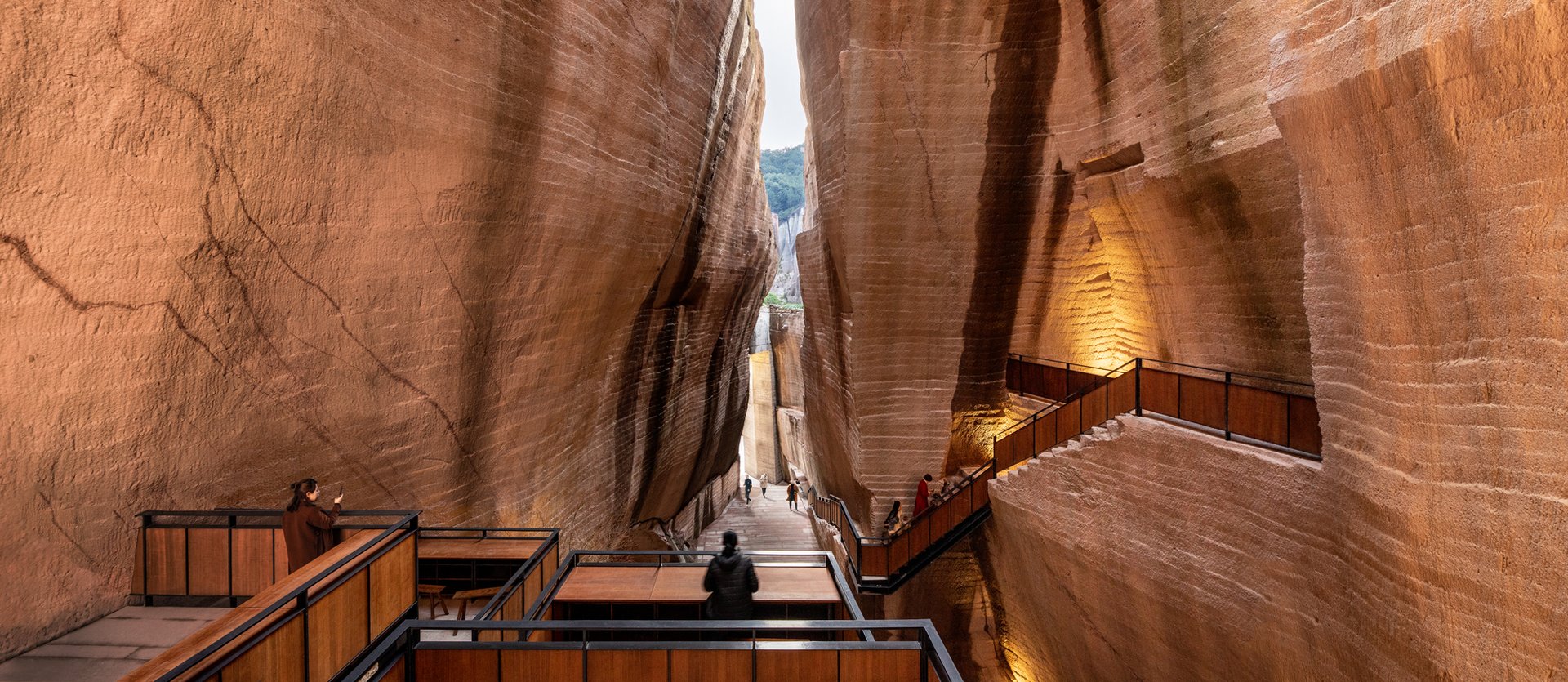缙云仙都8号石宕 / Quarry # 8
Quarry # 8
8号石宕:书山
8号石宕的入口距离9号石宕仅几米远,石宕内部的不同平台被利用,成为阅读、学习的场所。这个空间向山谷中延伸约50米,净高度接近40米。这个洞穴形态也是从上部往下方手工开采的结果。这些侧向平台展现采石的截断层,采石禁止后,石宕里这些被废弃的采石区块构成成了一个随机的内部空间地形。
石宕附近曾经是古代文人聚会雅集的地方。唐代诗人韩愈有云:“书山有路勤为径。”相关的文化内涵也让8号石宕成为主要空间,中国每一个学子都能意会的传统人文教育理想,被转译铭刻在这个空间的场景里。
室内的横向石阶超过5层,高达12米,需要一定努力才能攀登。这些平台通过楼梯到达,设置有书架和学习的地方,访客可以沉浸在石刻和书法的世界里。就像是攀登知识的山峰一样,这些书房平台在梯道上层层展现,通往顶层。在那里,有一个27m长的通往2号石宕的隧道。
Quarry No.8: Book Mountain (Shushan)
Only a few metres from Quarry No. 9, one finds the entrance to Quarry No. 8, which houses a location for reading and studying that is distributed over various platforms in the interior. The space extends about 50 metres into the mountain and reaches a height of nearly 40 metres. This cave, too, was created as a result of stones being quarried by hand from the top down. The lateral terraces are evidence of faulty rock, which is why the quarrying of blocks was abandoned and a random interior topography was created.
Nearby this quarry are places where scholars met in historical times to debate their ideas. The Tang Dynasty poet Han Yu spoke of how the path through the Mountain of Knowledge (Shushan) is only made possible through diligence. With its cultural connotation, this space is thus the most important one in the group, since, here, a cultural and educational ideal that every schoolchild in China immediately recognizes is inscribed in the found situation.
The lateral stone terraces in the interior develop over five levels up to a height of 12 metres, which can only be climbed with a certain amount of effort. Positioned on these platforms, which are accessible by stairs, are shelves of books and places for studying, where visitors can immerse themselves in the world of stone inscriptions and calligraphy. Like the proverbial mountain of knowledge, the galleries that must be climbed on the way to the top level pile up in front of the visitor. From there, a 27-metre-long tunnel leads to Quarry No. 2.
[*]
You can use the article for your WeChat-account and your website.
Please link/or mention that it was from Eduard Koegel and first published in the magazin on world-architects.com.
(https://www.world-architects.com/en/architecture-news/reviews/quarries-as-spatial-resource)
